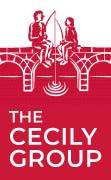
Leadership succession in family businesses is never simple. While many articles and advisors outline neat, step-by-step plans for passing the baton from one generation to the next, the reality is usually far more complex. Emotions, legacy, and power dynamics all come into play, especially when family is involved.
Much of the literature focuses on succession planning adapted from public company models. These models often assume a rational process where the founder supports the successor, the family agrees, and the next generation simply steps into the role. But real-life transitions rarely follow this script.
So what can make a real difference during this vulnerable time? One answer, often overlooked, is the presence of an external advisor.
The Unique Role of the External Advisor
An external advisor can be a mentor, role model, and sounding board for the successor, but only for a limited time. Their job is not to replace the incumbent or to stick around permanently. Their role is to help the successor prepare for leadership, gain legitimacy, and manage the complex family dynamics involved in a transition.
As Salvato and Corbetta (2013) explain:
“The Advisor offers a role model to the Junior successor, endorses Junior’s leadership, and eventually withdraws from the transitional leadership role to further confirm Junior’s accomplished leadership.”
This temporary leadership is what they call transitional leadership. It’s a bridge, not a destination.
Why Family Businesses Need Transitional Leadership
Family businesses often prefer to keep leadership “in the family.” While this helps preserve legacy and values, it also limits the talent pool and increases pressure on the chosen successor. And when the next leader is a family member, the expectations from both inside and outside the company can be enormous.
Here’s where external advisors become valuable:
- They guide successors in developing their own leadership identity.
- They model how to lead, without taking over.
- They balance the needs of the family, the business, and the individual.
The Three Building Blocks of Leadership
According to the research, the successor must develop three core qualities to succeed:
1. Individual Internalisation
This is the successor’s personal commitment. Does the person truly want the role? Do they have the skills and motivation needed? Too often, the successor is chosen by birth order or family expectations, not by passion or aptitude.
“First, through individual internalization, an individual (e.g., a next-generation successor) comes to incorporate the leader role as part of his or her self-concept. This is not simply an intraindividual cognitive assessment, but the result of specific social interactions.”
— Salvato & Corbetta, 2013
External advisors can help by mentoring the successor, helping them assess their strengths, and planning how to fill any skill gaps.
2. Relational Recognition
This is about how others in the organisation see the successor. Are they accepted as a capable leader, or seen as someone who just got the job because of their last name?
“Second, the leader role internalized by the individual must be strengthened by relational recognition, which means that somebody else within the organization recognizes the individual as a leader and takes on a reciprocal follower position.”
— Salvato & Corbetta, 2013
An advisor can help manage perceptions. They may place the successor in roles where they can prove themselves, gradually increasing responsibility to earn trust and support.
3. Collective Endorsement
Collective endorsement refers to the broader family’s support for the successor and the succession plan. Even if the family initially agrees on the path forward, priorities can shift—especially as other branches consider roles for their own children or question earlier decisions.
External advisors play a key role in maintaining this alignment. As Salvato and Corbetta (2013) explain:
“Surrogate leadership endorsing performed by the Advisor took three different forms that we observed in almost all four cases: junior leadership promotion, junior leadership defense, [and] modeling family members’ followership.”
— Salvato & Corbetta, 2013
This means advisors actively help reinforce commitment among other family members. They model how to follow and support new leadership, defend the successor from criticism when necessary, and promote a shared sense of ownership in the transition process. This collective support is essential to avoid fragmentation and ensure the successor can lead with confidence.
Promoting, Defending, and Maintaining Leadership
The advisor’s temporary role can be broken down into three practical tasks:
Leadership Promotion
- Identifying and developing the successor’s unique abilities.
- Helping define the skills required for the future of the business.
- Communicating the succession plan clearly and early.
Leadership Defense
- Helping the successor deal with criticism and internal resistance.
- Acting as a neutral voice when tensions arise.
- Ensuring the successor is not undermined by family politics or unclear expectations.
Maintaining Family Followership
- Keeping communication lines open between the successor and the rest of the family.
- Reminding the family of the shared vision and agreed plan.
- Creating a space where disagreements can be voiced without derailing the transition.
Preparing the Stage
A key feature of this model is the advisor’s graceful exit. This handoff ensures the successor can fully step into their own authority. The advisor doesn’t stay in the spotlight. They prepare the stage, then quietly step into the wings.
Closing Words
Family business successions are never easy, but they don’t have to be chaotic or divisive. The temporary involvement of an external advisor can bring clarity, support, and structure during a time of emotional and strategic upheaval.
By promoting leadership, defending it from undue pressures, and ensuring the family remains united, an external advisor can help transform a risky transition into a confident next chapter.
The key is that this support is temporary, strategic, and focused, so that when the advisor bows out, the successor is fully ready to lead.
Reference:
Salvato, C., & Corbetta, G. (2013). Transitional leadership of advisors as a facilitator of successors’ leadership construction. Family Business Review.
